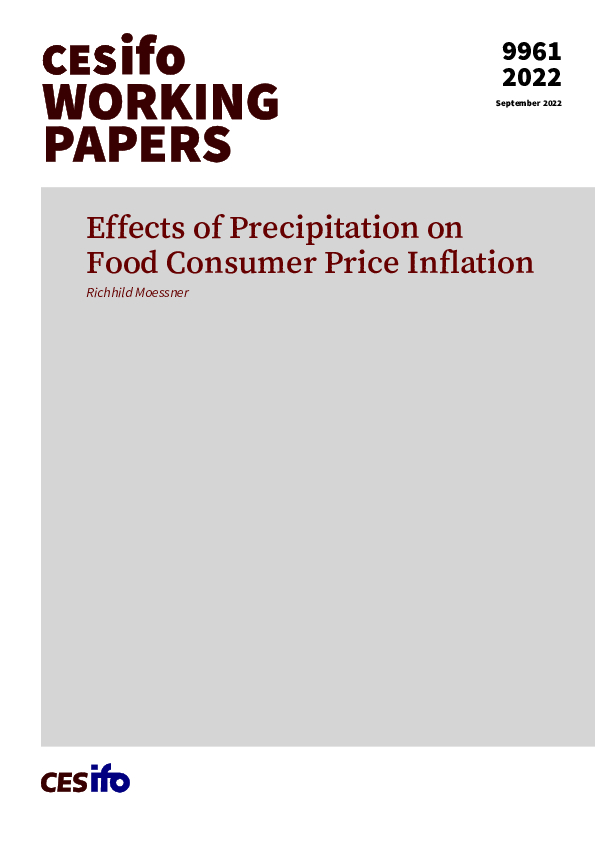Effects of Precipitation on Food Consumer Price Inflation
CESifo, Munich, 2022
CESifo Working Paper No. 9961

We study how precipitation has affected food consumer price inflation (CPI), using dynamic panel estimation of food CPI Phillips curves across countries for 34 OECD member and candidate economies from 1985 to 2010 augmented with climate variables. We allow for nonlinear effects of precipitation on food CPI inflation, and also control for possible nonlinear effects of temperature. We find that precipitation has significant nonlinear effects on food CPI inflation. The coefficient of food CPI inflation on the linear precipitation term is significantly negative, and the coefficient on the quadratic precipitation term is significantly positive. Consequently, food CPI inflation increases as precipitation becomes very low and very high. Moreover, we find that temperature has no additional explanatory power for food CPI inflation over and above that of precipitation. We control for the effects of inflation expectations, the output gap and exchange rate changes on food CPI inflation, which are significant with the expected signs.